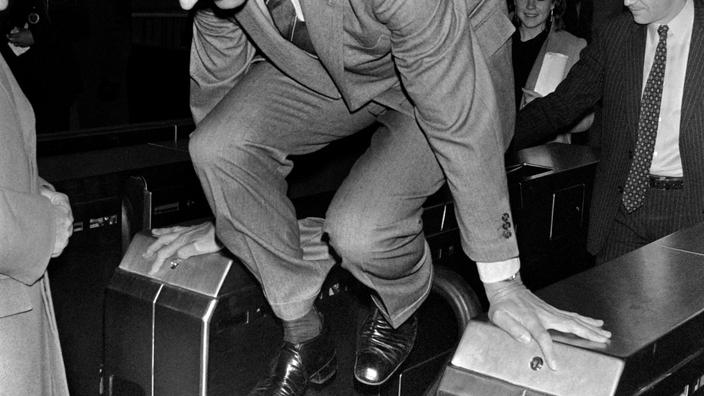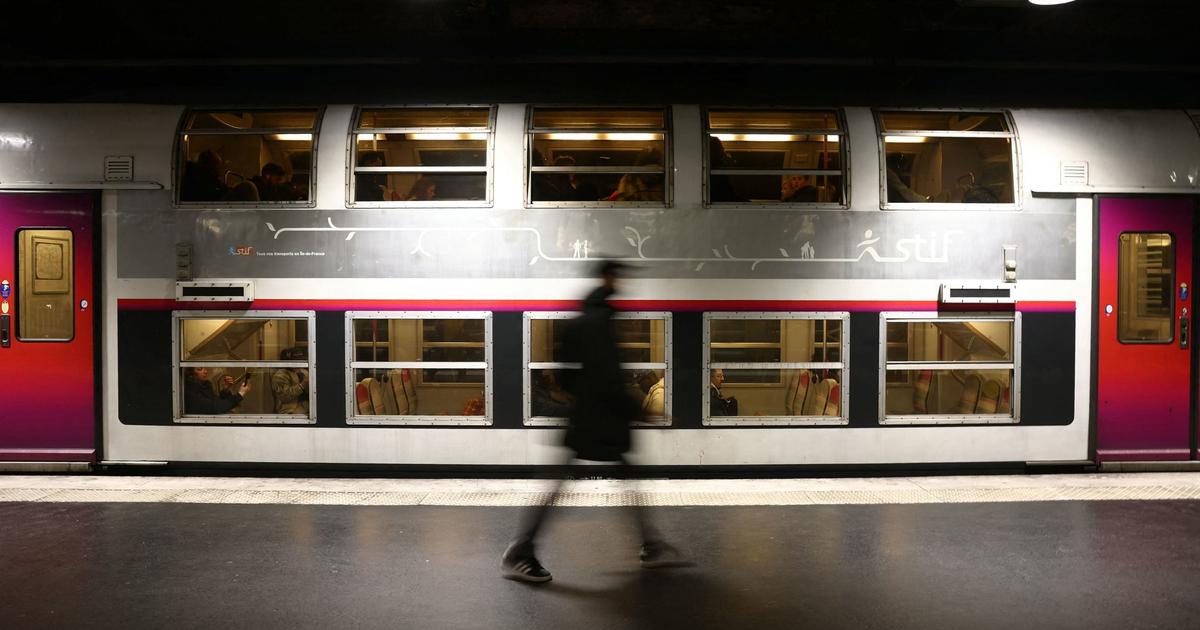It's a small revolution!
On October 14, the ticket book will no longer be sold to the ticket machines of around a hundred RATP network stations, before disappearing completely in March 2022. In homage to this iconic object of the capital, here are six anecdotes about the metro ticket , taken from the book
Petite histoire du ticket de métro Parisien
by Grégoire Thonnat, published by Éditions Télémaque.
To discover
SIMULATOR - Are you getting paid well?
Read the report Housing, transport ... What will France look like in 2039?
Its price has dried up several political figures
This is a trick question that journalists regularly ask during election periods, to ensure that politicians are familiar with the daily life of the French.
Latest to have paid the price: Nathalie Kosciusko-Morizet, in February 2012, then spokesperson for Nicolas Sarkozy candidate for re-election, who announces a price of 4 euros and some ... against 1.70 euros per 'era.
Interviewed by journalist Françoise Giroud during the 1974 presidential election, candidate Valéry Giscard d'Estaing was the first to be trapped, answering 90 cents instead of 1.30 francs.
Without hard feelings, however, since he will appoint the journalist secretary of state in charge of the status of women once elected.
In his youth, Valéry Giscard d'Estaing had also been a regular on the metro, making regular trips between his home in the 16th arrondissement and the Lycée Louis-le-Grand during his preparatory class years.
One day, while waiting for his correspondence at La Motte Piquet station, he saw his then idol on the platform: Édith Piaf.
He changed many destinies
What could be more romantic than writing your beloved's phone number on her metro ticket? Under the spell of a beautiful German met on the platform of the Porte de Saint-Cloud station, the young Serge Klarsfeld hastens to note the number she gave him before forgetting it ... and does not find, as a writing medium, than his metro ticket. Serge and Beate will marry three later, before leading the life known to them of hunters of Nazis and defenders of the memory of Shaoh. “
The metro is a place of mixing. Lives are made and unraveled for the time of a ticket,
”laughs Grégoire Thonnat, the author of
Little history of the Paris metro ticket
.
Jane Birkin, Juliette Gréco or even Keziah Jones ... Many famous personalities have seen their lives turned upside down in the metro.
This was particularly the case of Louis de Funès, bar pianist during the Occupation.
One day, in 1944, he narrowly missed a metro at Villiers station.
Waiting for the next one, he meets Daniel Gélin with whom he had taken acting lessons a few years earlier.
The latter then offers him a role in a play, convinced of his talent.
If he then remained a long-time subscriber to the second and third roles, it is this piece that marked the debut of this extraordinary actor.
Louis de Funès would later say that he owed his career to this metro that he missed.
Louis de Funès in 1943 when he was working as a bar pianist.
Photoshistos
People come to drop it on Gainsbourg's grave
The year 1973 was a turning point in the history of the Paris metro. Automatic turnstiles - "
automatic control devices armed with tripod arms
", as they were described at the time - were installed, rendering the profession of punching pointless. The older ones will retire and the others will become station agents. This profession would be forgotten today if Charles Gainsbourg had not immortalized it in his song
Le Poinçonneur des Lilas
. On the day of the singer's burial, in a nod to this song, his grave, in the Montparnasse cemetery, is covered with metro tickets. Since then, people have continued to place it on his grave every day, along with a host of other heterogeneous objects: lighters, packets of cigarettes, poems ...
He was plugged in
Does the “
chic and shocking
”
ticket
mean anything to you? If you were born at the very beginning of the 80s, you could not have missed this advertising campaign on television. At that time, ridership of the Ile-de-France metro was down in front of the car. RATP seeks to revitalize attendance with a modern television campaign aimed at young people. The clip will be available in several variations. The slogan "
You have the chic ticket, I have the shock ticket
" will
hit the mark
and the music will even be broadcast in nightclubs. In a nod to the song
Le Poinçonneur des Lilas
, Serge Gainsbourg makes an appearance in one of the variants, setting a ticket on fire, by launching "
t'as le ticket chic, moi, j '
have the shock lighter ”.
People collect it
If you try to have a metro ticket issued in each of the 304 stations of the RATP network (the issuing station is indicated by four digits printed on the ticket), then you are an esiteriophile, in other words a collector of transport tickets.
For true followers of the discipline, the grand slam consists of owning a ticket from all eras and all categories.
It is not an easy task.
"Tickets from Chatelet station are not uncommon, regardless of the time of issue, but owning a 1st class ticket from Croix de Chavaux station is much less common"
says Julian Pepinster, RATP speaker.
It is also common among esiterriophiles to collect tickets issued on specific dates: the day of the armistice, that of the arrival of the Germans in Paris, etc.
Some have even kept until today the number 1 tickets of several of the stations open on the day the Paris metro entered service, July 19, 1900.
Foreign tourists take it home
The little Eiffel Towers or the
I love Paris
caps
are not the only souvenirs that foreign tourists like to bring back from our capital.
Those who took the metro during their stay also keep their ticket.
It was often featured in photo albums when it was still being made.
Thus a certain Bill Clinton, on a trip to Paris during his student years, brought back in his suitcases one of these little pieces of cardboard.
Cover of Grégoire Thonnat's book.
Telémaque Editions












/cloudfront-eu-central-1.images.arcpublishing.com/prisa/KMEYMJKESBAZBE4MRBAM4TGHIQ.jpg)


